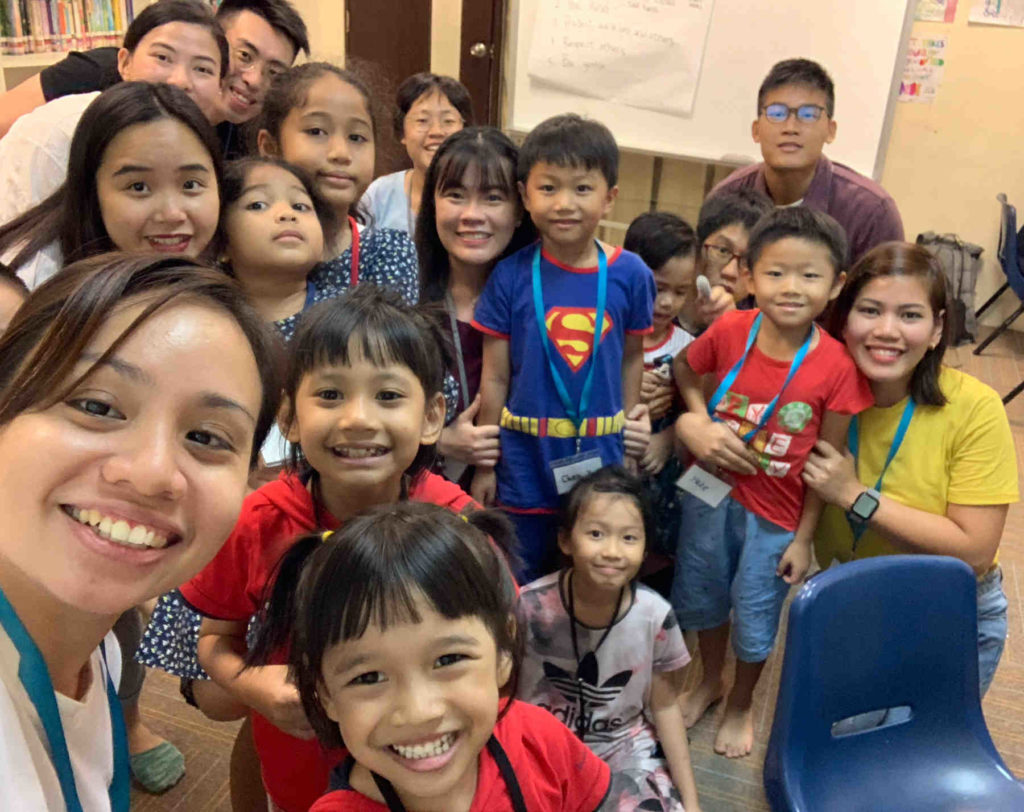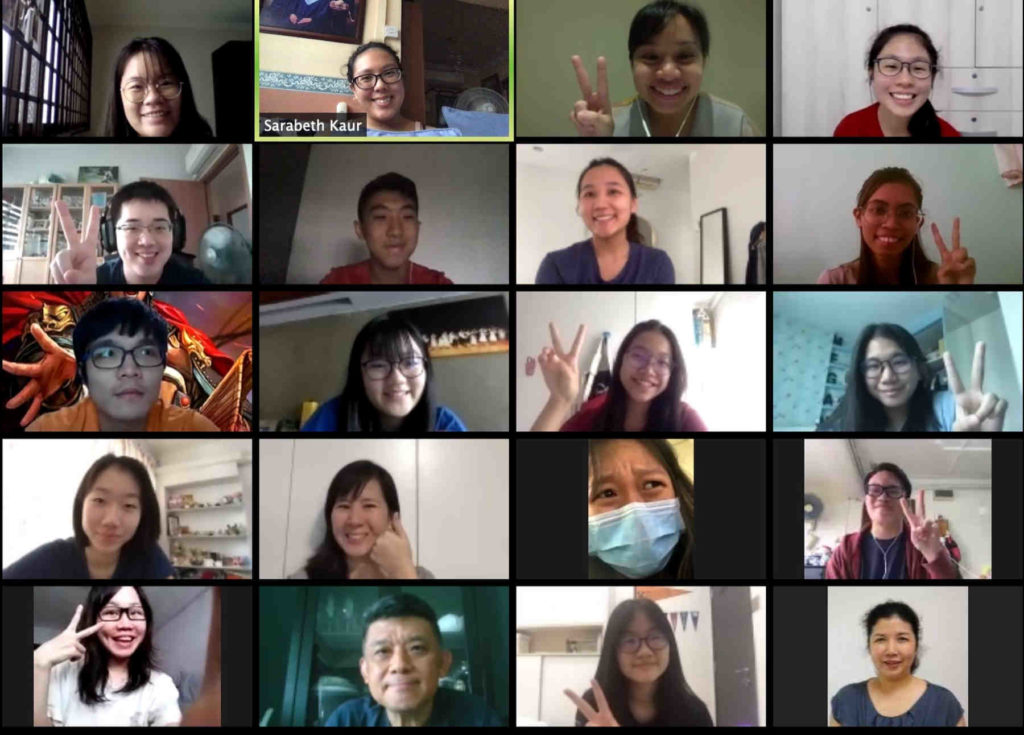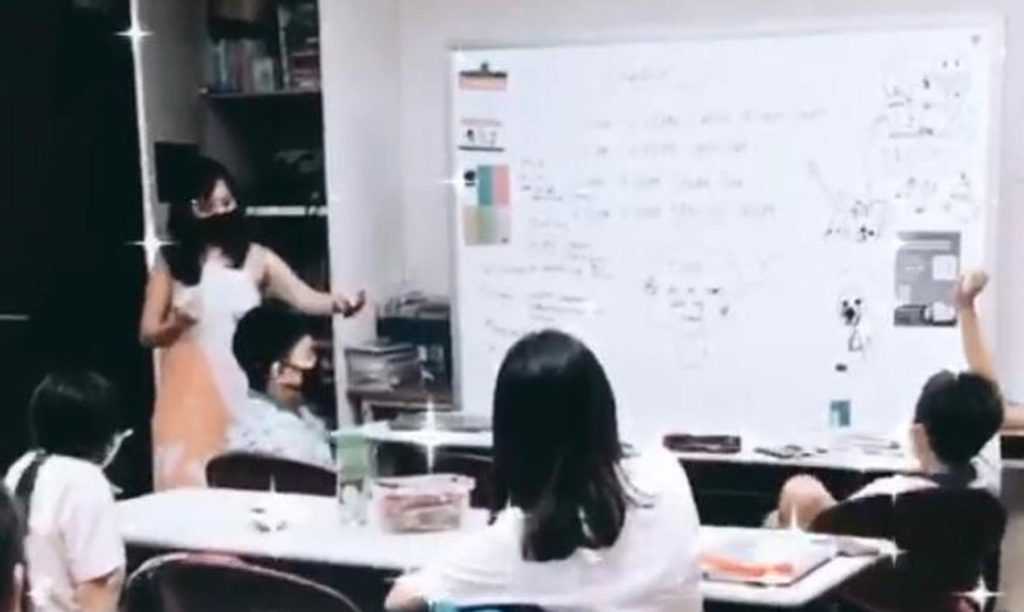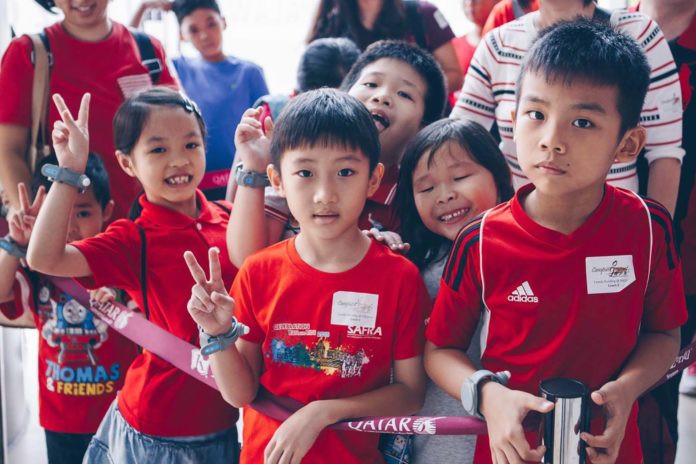Singapore’s government announced the “circuit breaker” — the lockdown to contain the spread of COVID-19 — in early April. This extended into the first week of June, closing all non-essential workplaces and suspending schools. Also mandated was a transition to home-based learning.
CampusImpact, a local charity with an after school tuition and counseling center for students in need, anticipated the potential for learning disruption. Seeing what was happening with coronavirus in the Asia-Pacific region with closures, they were already making preparations to continue supporting students through e-learning. These are families that rely on them daily.
Elysa Chen works with a nimble team of program directors, counselors, and volunteer teachers as the Executive Director at CampusImpact. She shares lessons learned and tells the story of how creative strategy, not necessarily the latest technology in education, and “the human touch” helped their learning community through the disruption caused by COVID-19.

Getting devices and getting online
“We started two weeks early (before the circuit breaker) with the center closure. It was a good test for us,” said Elysa.
“Because when we asked the kids: Do you have an internet connection? Do you have a device that you can log in so that we can continue our services online? Every last one said ‘yes’.”
But in the first week of e-learning, only half of the students were responding. Many of the children who were usually participative at the face to face sessions were suddenly quiet. Elysa and her team wondered what was going on.
“Although they said yes, they didn’t really have devices,” she explained. The kids were “saving face” by not admitting that they didn’t have a device at home to get online.
Mobile device management for education was a priority. Since the center was relying on Class Dojo to send out assignments, there was a scramble to get smartphones — mostly local donations through Facebook — and get the kids online. “The circuit breaker in Singapore hadn’t kicked in yet so we could do house visits and share the devices with them,” said Elysa.
Which led to the next hurdle which highlights how disadvantaged some of these children are. As some students were trying to participate online, the answers they were giving or the pictures they were making were totally wrong. It was apparent that some of the students can’t read, said Elysa.
“We thought Class Dojo would be sufficient, but we didn’t anticipate the language problems,” she said. “When (the children) are in the (tuition) center it’s OK, they are on task. They understand everything.” Learning from home, these children are often left on their own.
Before the COVID-19 disruption, tuition is face to face at CampusImpact. Students come into a structure and timetable. But at home, there can be a lack of discipline.
“For some kids, they were trying to do their homework lying down on their bed,” explained Elysa. “Once you go home, there are two siblings with special needs, a crying baby, and a mom who’s losing her mind, and everyone is crammed into a tiny apartment.”
Zoom challenges
Moving CampusImpact’s after school activities to the virtual space and maintaining order over a group of young kids was a challenge. Cameras and microphones were being switched on and off, and teachers’ shared screens being annotated by naughty students.
And then there was the dreaded 40-minute time limit on a free Zoom account. Many of the charity’s programs were structured for one or 1.5 hour sessions. A workaround was Zoom invites sent out to the students’ phones using WhatsApp. The volunteer teachers were able to get creative with scheduling break times and one-on-one sessions before being kicked off with the Zoom time limit.
“We are too poor to buy paid accounts for every class,” admitted Elysa.
The small smartphone screens soon proved to be a limitation. It was also distracting when some students were walking around the house during their online sessions.
“We thought it would be good enough for kids to have a device and work on some homework,” said Elysa. “But it turned out that the screens were too small because teachers were trying to show videos or worksheets.”
Despite having the basic EdTech tools — connectivity at home and devices distributed — video conferencing still wasn’t easy for some low-income families.
“Some of the kids no matter how hard we tried or coaxed them, refused to turn on the (camera), because they were embarrassed about the family,” explained Elysa. “They didn’t want to show what was going on at home.”
Keeping Students Engaged
On Zoom it’s tough to hold the attention of a class for one and a half hours. Keeping kids engaged during face to face tuition is very different from video conferencing. CampusImpact decided to create clusters of five students to one teacher. The groups would meet every day on Zoom.
One strategy used by CampusImpact teachers was a virtual treasure hunt: Find an item in your room that’s being used for 10 years. Turn on your camera. Show everyone. And tell them why this item is so special.
“So that would cause the kids to turn on their cameras. Slowly the rapport is built, and it’s an everyday thing,” said Elysa. “The kids started to really relish the opportunity to see their friends because it was still a community.”
After two or three weeks of learning from home, CampusImpact organized a group activity where students from other clusters would finally see each other after such a long period
“They were shouting over the volunteers who were trying to conduct the workshop,” said Elysa. “And that really kept the group intact. We didn’t lose a single one of our children to the circuit breaker.”
Preparing for online teaching
While CampusImpact has some professional teachers, others are regular folks who want to volunteer and make a difference. All undergo “basic training” before being sent into the classroom.
Not all volunteer teachers anticipated the sudden shift to remote teaching and e-learning. Training and new recruits were needed.
“No one’s prepared for this. So everyone was really terrified of having to teach online,” explained Elysa.
“They didn’t have the skills. They didn’t have the knowhow. Some of them may not have had pedagogy, background, or experience so we had to teach them how to engage kids online.”

With everyone working from home, CampusImpact held biweekly Zoom sessions with the teachers, sharing everything from basic video conferencing techniques to best practices.
The volunteer teachers and assistants supported one another. What was their motivation to do this additional volunteer teaching work remotely, in addition to their other responsibilities?
“That’s their child,” said Elysa, who said that each teacher is in charge of 5-6 kids. “It’s small enough to be significant. ‘Hey, I didn’t get that child.’ It’s not one teacher to 40 students.”
“I was very thankful to the team with how adaptable and nimble they were to make the changes. They were very willing to try anything. How do you find the way to reach the child that you can’t contact?”
Student wellbeing
For many students who may be facing troubles at home, CampusImpact was a safe place to go after school. With the lockdown, the pandemic threatened to take that safe place away from them.
“We tried as hard as possible to extend the safe place into the virtual world, where we would have the clusters, the teachers would call the kids every day,” explained Elysa.
The volunteer teachers sometimes went through worksheets on the phone or on WhatsApp video. “So for those who found it hard to come onto Zoom, we would call the home and talk to the child. We didn’t want a single child unaccounted for.”
The students’ reactions to e-learning surprised many of the teachers. While the reticent kids were shy in a face to face setting, they started displaying leadership abilities online.
“They almost morphed into a different person,” Elysa said.
Some older students thrived in the online environment because it transferred the ownership for learning from teacher to student.
But the emotional toll of pandemic’s disruption on some of the students’ daily lives became apparent upon their return to the center after the end of the circuit breaker.
The center held an activity called “‘COVID-19 time capsule” where students were urged to write down “one thing I’m thankful for, one person I missed, one cool thing I tried” in order to reflect on how they survived the circuit breaker.
“One of them started crying,” explained Elysa. “Because she said she really missed her friend. It’s almost like a delayed reaction. Maybe they were in ‘survival mode’ — it just keeps you going until you’re over it. Then it’s a bit like PTSD. So she’s undergoing counseling now. And we continue to support her.”
Supporting families
Going beyond teaching students in afterschool programs, CampusImpact is often a family’s empathetic ear. In some families, the students had parents who were essential workers. Quite a few others had parents who lost their jobs because of businesses closing.
“We noticed that families were experiencing increased tensions and stress. Some families were quarreling a lot. It was very tough on the child,” Elysa explained, as she recounted the story of one boy.

“We were wondering why we couldn’t reach him. He was spending three hours a day outside the home without access to wifi. Sitting in the stairwell.” Counseling services were provided via Zoom for students that needed it.
“We had to do a check-in with the parents to see what else we could support them with. They are very close to us,” said Elysa. “They would pour out their unemployment woes over the phone. Then we would be pointing them to several resources and grants to apply for from the government.”
Facing hard times even without the coronavirus pandemic, families, when asked, would say they had everything they needed. Elysa got specific with questions: “Do you have vitamins for your children?” knowing that they are unable to provide these kinds of things. “So they said, ‘I’ve never given vitamins to my children all their lives.’ Then we will do that for you.”
The charity waived the usual fees for their after school program during the lockdown period where the students participated in online learning. This was lifesaving, according to a parent. The positive feedback encouraged the volunteers.
“CampusImpact showed a lot of care and concern over our daughter, loaning her a laptop for virtual learning,” said one parent.
“By seeing her progress and wellbeing I am much comforted during this dark period of time when I am out of a job but still have to face a lot of life challenges and trials.”
Back to school, lessons learned
With Singapore’s circuit breaker over, students have returned to school and CampusImpact is once again open for after school tuition with social distancing in place.
Singapore’s Minister for Education Ong Ye Kung has said that home-based learning will become a regular part of schooling post-COVID-19 since it encourages more independent, self-directed learning, which is one of the most important lifelong skills.
“We’ve seen some classes do better online so those stay online,” said Elysa. “We’ve opened up the center for the kids with ‘shaky screens and walking around the house’ so that we have a more conducive environment.”
What lessons can be learned by resource-challenged teachers and learners in other countries?
“It’s the less developed countries that are somehow very tech-savvy,” said Elysa. “When I look at my friends from Myanmar, when they post something on Facebook they get thousands of likes. They come from no tech, like the landline phone, and they jump to phones with an internet connection.”
“It’s really down to the human touch. And that’s something no tech can take over,” explained Elysa.
“Tech enables us to maintain or strengthen that human touch. Without the human touch, the Zoom wouldn’t work. Without the feeling that you really care. The one to one. I think that was the secret. Even if you don’t have internet access, there’s the phone. We called them. And we hounded the parents. We bite on the bone like dogs and we never let go. That tenacity. We just never let them go.”
_____
Donations for CampusImpact can be made at GivingSG. For other inquiries, contact details are on their website.




